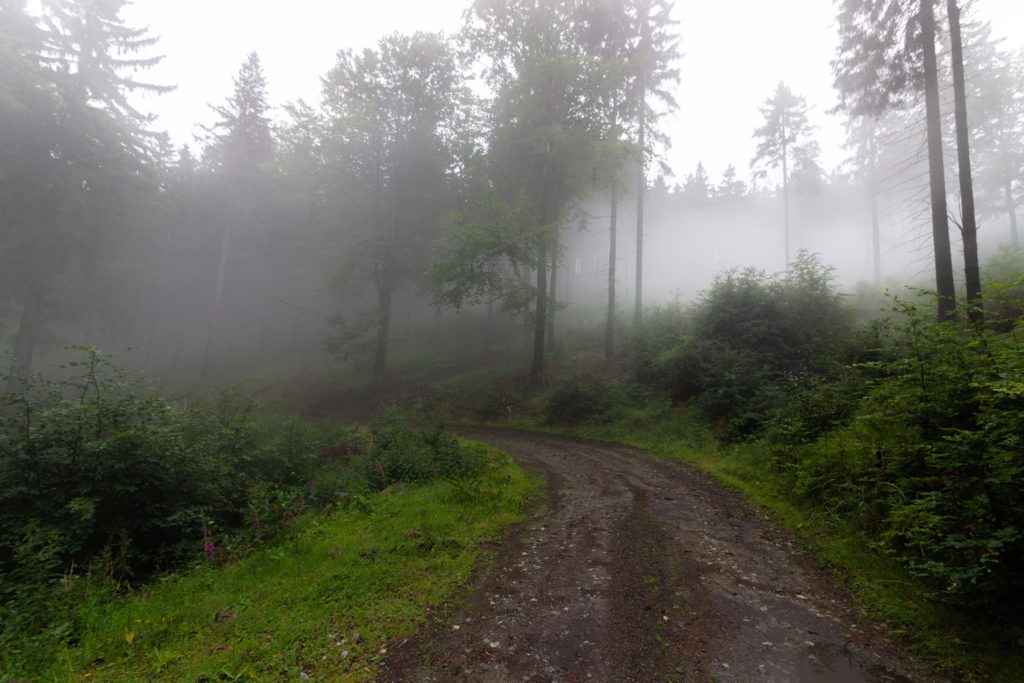We all have people, places, situations that trigger us. And we’re dealing with lots of…
Reframing Lonely Seasons
Driving behind Andrew’s UHaul, The kids and I were crushed into our minivan with a pile of odds and ends and my mother-in-law who thankfully is a moving genius. It all felt uncomfortably familiar though. This was our third move in a year and a half.
Home? It was back in a little yellow cottage on the edge of Lake Michigan, or in eastern PA scooting up to the teak table on my mom and dad’s back porch, or in Pittsburgh walking the streets of Sewickley. Now home was uprooted again.
We wound our way 10 hours south through the Appalachians and came out in suburban Atlanta. Putting on a brave face for the kids with dance parties and dreaming out loud of what lay ahead, I knew from my own story on the other side of big transitions is my old friend depression.
Rich Mullins, song Here in America (Click here to listen to the song) was playing on the speakers as we drove through the mountains. Back in college, we fell in love with his album, Liturgy, legacy and a ragamuffin band and it has become the background music of much of our lives:
“And once I went to Appalachia for my father he was born there
And I saw the mountains waking with the innocence of children
And my soul is still there with them wrapped in the songs they brought
And the Holy King of Israel loves me here in America
And I’ve seen by the highways on a million exit ramps
Those two-legged memorials to the laws of happenstance
Waiting for four-wheeled messiahs to take them home again
But I am home anywhere if You are where I am.”
I am home anywhere if You are where I am.
That last line always tugs at me. It’s beautiful, like talk of a far country. I’ve seen the glossy pictures. Honestly, It’s rarely my experience.
I approached this week’s Presence Project as a traveler, behind the umbrella of a guide. This time wanting to see loneliness through the eyes of Frank Laubach, a literacy missionary to the Philippines in the 1920’s and 30’s. When he moved to the island of Mindanou to work with the Moros tribe, he was alone, and yet he was not alone. He was determined to walk aware of the Presence of God and found as he did, luminous traces of heaven.
After I spend summers with extended family up north, every fall leaves me lurching through a season of loneliness. And After talking with some of you this week I see I’m not alone. One listener calls loneliness the black dog of depression always nipping at her heels.
Some of you struggle with loneliness seasonally, like at the holidays. Others feel it coming on as a tidal wave after the death of a loved one. One Presence Project facebook member shared his internal process after this to my question about loneliness and practicing the Presence of God:
In times when I feel the loneliest, that least secure, I realize something is missing, and I realize that thing is a heart full of God. I immediately focus my attention on the real presence of God, and that awareness floods my heart with a sense of communion, and my mind with peace. I no longer feel like I am alone as I enter hostile territory.
That friend, sounds like what Rich Mullins meant by “home.” And that’s the far country we’re glimpsing with Frank Laubach today.

Loneliness is epidemic in a country of frequent flyer movers, workaholics, and smart phone addicts.
We can be lonely right in our home town, lonely in bed with a silent spouse, lonely in a WalMart with a mass of people pushing carts through the aisles, lonely in a church full of masks.
But what’s at the base of loneliness?
Dr. Ed Tronick, the Director of the Child Development Center at Harvard, created a study explaining the pain of disconnection for a baby struggling to attach to a caregiver. I think it has something interesting to say about the core of loneliness, the lack of an attentive face.
This is how the study went: (Click here for the Youtube video of STILL FACE.)
First, you see The mother walk into a room placing her one year old in a high chair. They give eye to eye greetings and both are fully engaged with their voice and facial expressions. The baby starts pointing and engaging the mother in connection with the world around her. The mother is mirroring the child’s emotions, playful, and connected. Dr. Tronick then asked the mother to not respond to the baby looking at her with an entirely STILL FACE. The mother then turns her head toward the door and when she faces the baby again, does so without any emotion or connection. The baby then goes through a range of emotions. In Dr. Tronick’s words, “ She uses all of her ability to get the mother back” smiling, cooing, pointing. The baby then reaches both arms towards the mother in a questioning frustration unable to understand what was happening. Next, she slouches unable to hold a sitting position banging her body against the back of the high chair. Then she begins making noise, clapping and screeching in anger. Eventually the baby turns away because of the stress and finally has a complete meltdown, crying. All of this happens within two minutes.
At this point the mother begins to respond to the baby and the baby can come back to a place of peace again within the mother’s care.
Dr. Sue Johnson, a marriage therapist who works with attachment, joined with Dr. Tronick to show how people in a marriage go through the same stages of disintegration. A husband is coached by Dr. Johnson to give a STILL FACE to their spouse for 5-10 minutes. The wife asks a question. The husband refuses to engage, looks away, gives one word answers, and doesn’t respond to his wife’s emotion. Then, we watch the wife go through a similar process as the baby ….she first tries to get his attention, tries to catch his eyes, her voice goes up in pain, she loses her posture, then she looks away trying to disengage herself, and finally breaks into tears.
(Click here for the STILL FACE video with married couple.)
Deep loneliness occurs when we can no longer find the face of our loved one. Or when our loved one disengages. We are all looking for a face turned towards us to be seen and known AND to “Come to a place of rest” within their love.
Brennan Manning tells the story of a little boy who was woken up by a nightmare in the middle of the night and wandered into his mom and dad’s room. He pulled blankets in with him and laid down next to his daddy’s side of the bed. And in the dark, even though he couldn’t see, he begged his father, “Abba, turn your face to me.”

Dr. Sue Johnson, the marriage attachment specialist, teaches us to use the question ARE you there? As a way to recognize someone available for healthy attachment.
She spells out ARE as an acronym:
Accessible: Reachable, Open, and Attentive. Accessible.
Responsive: Emotionally connected in positive and negative situations
Engaged: the sense that you are deeply valuable to this person
And if God is gazing into our eyes with constancy, with delight, and with unconditional love, there’s an invitation extended, to turn around and return His gaze.
Frank Laubach heard that invitation.

In His journal turned book, Letters of a Modern Mystic, written from 1930-1932, Frank Laubach, chronicles his passion to live in the Presence of God. He these letters during a transition in his ministry from Manila where he’s been ministering as a literacy missionary for 15 years, to a small Muslim tribe on the island of Mindanao with the Moros people. So he’s moving from an urban setting to a highly regulated tribal setting. While with the Moros, Laubach develops a system of translating the spoken language into a written one so he’s able to teach people to write and read their own language in a matter of hours.
Laubach was a friend of President Truman helping to guide his thinking around education. The education initiative, “Each one, teach one” is from Laubach’s work and there’s an American stamp with his face on it. But the story of his rich inner life may all have disappeared had not Dallas Willard and Richard Foster brought it to the forefront in their own writings.
Frank Laubach called the town he lived in, Lonesome Lanao, and wondered on the page if God had allowed him to experience loneliness in order to focus Frank’s attention on practicing His Presence and loving the Moros. He wondered if the “aching void” was an invitation to be filled with God.
And this is my wondering as well:
Can we experience God as our primary attachment figure, turning and returning towards the face of He who is always accessible, responsive, and engaged? Frank’s story reveals a man who has found this not only possible but he stands on the shore of Mindanao with an invitation in his hand.
Through the journal we get glimpses that Frank is further down the spiritual road than most of us. At this point in Frank’s walk with God, he was no longer asking the attachment question, ARE you there for me? He didn’t doubt God was Accessible, Responsive, and engaged toward him. Instead, he was wondering how he could be Accessible, responsive and engaged in return toward God.

Right now I’m seeing four stages to practicing God’s Presence I’m seeing not just in Frank Laubach, but in Brother Lawrence, St. Patrick, Mother Teresa, C.S. Lewis, and LeAnne Payne:
The first stage is:
- Becoming conscious of God’s continual presence. This is stage 1.
- Soaking in God’s ever present Love and living conscious of our identity as God’s beloved child.
- But the third stage to Practicing God’s Presence is. Becoming responsive in return.
4th stage is: we can see this in Frank, St. Patrick, and Mother Teresa’s life:. Turning toward the world in love together. Together, we become accessible, responsive, and engaged to Others around us as we spill out love to those in our midst.
Let’s look at these four stages with these attachment questions:
- Is Your face turned towards me? Are you accessible?
- Are You responsive and engaged?
- Am I responsive and accessible to You, aware of Your Presence and living out of that love?
- Together can we turn towards others around us, our love spilling over?
We can hear all four stages in Frank’s collection of letters.
First, becoming conscious of God’s Presence.
Frank Laubach applied the same research brain which developed systems of literacy to his desire to practice the Presence of God. He decided to make it into what he called, the Game of Minutes, bringing his attention toward God first one minute of every hour and then later, one second of every minute.
Second, we hear profound movements of God’s love:
Much of Letters of a Modern Mystic reads as Intimate love notes:
“I have tasted a thrill in fellowship with God which has made anything discordant with God disgusting. This afternoon the possession of God has caught me up with such sheer joy that I thought I never had known anything like it. God was so close and so amazingly lovely that I felt like melting all over with a strange blissful contentment. Having had this experience, which comes to me now several times a week, the thrill of filth repels me, for I know its power to drag me from God. And after an hour of close friendship with God my soul feels as clean as new-fallen snow.”
Third, Frank’s response to love was a turning towards Him in listening for His will.
This is from his letters in 1930 describing his pattern of early morning prayer:
“Perhaps a man who has been an ordained minister since 1914 ought to be ashamed to confess that he never before felt the joy of complete hourly, minute by minute–now what shall I call it?– more than surrender. I had that before. More than listening to God. I tried that before. I cannot find the word that will mean to you or to me what I am now experiencing. It is a WILL act. I compel my mind to open straight out toward God. I wait and listen with determined sensitiveness. I fix my attention there, and sometimes it requires a long time early in the morning. I determine not to get out of bed until that mind set upon the Lord is settled. After a while, perhaps, it will become a habit, and the sense of effort will grow less.
“This year,” he said, “I have started out trying to live all my conscious waking moments in conscious listening to the inner voice, asking without ceasing, “What, Father, do you desire said? What Father, do you desire done this minute?”
He added elsewhere: “It is very simple, so simple that any child could practice it. This simple practice requires only a gentle pressure of the will, not more than a person can exert easily. It grows easier as the habit becomes fixed. Yet it transforms life into heaven.”
And like Lewis he’s careful to tell us: “No emotions are necessary. Just the doing of God’s will makes the hour a perfect one. And the results of that one perfect hour, I believe, will echo down through eternity.”
Frank Laubach was also quick to make sure we knew this was not for everyone: “Do not try it,” he said, “unless you feel dissatisfied with your own relationship with God.” but then Frank turned his eyes on those of us who are skeptical, and he said this: “but at least allow me to realize all the leadership of God I can. I am disgusted with the pettiness and futility of my unled self. If the way out is not more perfect slavery to God, then what is the way out? Paul speaks of our liberty in Christ. I am trying to be utterly free from everybody, free from my own self, but completely enslaved to the will of God every moment of this day.”
Throughout this journey into the will of God, Frank looked to Jesus as his example pointing out scripture where Christ repeatedly spoke:
“For I came down from heaven, not to do mine own will, but the will of him that sent me.” And in John 8:28-29 where he said, “I do nothing on my own but speak just what the Father has taught me. The one who sent me is with me; he has not left me alone, but I always do what pleases him.
“As for me, I never lived, I was half dead…until I reached the place where I wholly, with utter honesty, resolved and then re-resolved that I would find God’s will and I would do that will though every fiber in me said no, and I would win the battle in my thoughts. It was as though some deep artesian well had been struck in my soul of souls and strength came forth. I do not claim success even for a day yet, not complete success all day, but some days are close to success, and every day is tingling with the joy of a glorious discovery.
Here was another journal entry, one in which he began to write about how God’s love was beginning to spill out on the Moros people:
“Last Monday was the most completely successful day of my life to date so far as giving my day in complete and continuous surrender to God is concerned–though I shall hope for far better days–and I remember how as I looked at people with a love God gave, they looked back and acted as thought they wanted to go with me. I felt then that for a day I saw a little of that marvelous pull that Jesus had as he walked along the road day after day, “God-intoxicated” and radiant with the endless communion of His soul with God.”
He went on to say:
“This concentration upon God is strenuous but everything else has ceased to be so…and I witness to the way in which the world reacts. Take Lanao and the Moros for illustration. Their responsiveness is to me a continuous source of amazement. I do nothing that I can see except to pray for them and to walk among them thinking of God. They know I am a Protestant; yet two of the leading Moslem priests have gone around the province telling everybody that I would help the people to know God.”
Here’s the last quote from Laubach’s Letters I’ll share on loneliness and finding home:
“The most important discovery of my whole life is that one can take a little rough cabin and transform it into a palace just by flooding it with thoughts of God. When one has spent many months in a little house like this in daily thoughts about God, the very entering of the house, the very sight of it as one approaches, starts associations which set the heart tingling and the mind flowing. I have come to the point where I must have my house, in order to write the best letters or think the richest thoughts…In this sense one man after the other builds his own heaven or his hell. It does not matter where one is, one can at once begin to build heaven, by thoughts which one thingks while in that place…I have learned the secret of heaven-building –anywhere.”
Frank Laubach had learned how to make every far country home.

During this section of the Presence Project, we’re using sensory reminders to turn our face towards He who is always present, a lit candle on our island, a cross in the pocket, perhaps a smell which reminds you of a time when you were loved. One listener holds a smooth wooden heart as she prays. Another listener gave her daughter a stone with a cross painted on it to hold in her pocket on her first day of work.
Walking with a sensory reminder is a simple way to turn towards God.
We’re human and humans forget to walk out the truth, but somehow as we take steps, right foot, left foot, serotonin flows, and truths make more neural pathways. Our brains begin digesting truth as we move from left brain to right brain and back again.
Dr. John Ratey, a psychiatry prof at Harvard, who writes about exercise and the brain wrote this:
“exercise can be self-medicating. A bout of exercise is like taking a little bit of Prozac and a little bit of Ritalin, you know, because it does the same thing. It increases our neurotrasnmitters like serotonin, dopamine and norepinephrine, just as our psychiatric drugs do, as well as having a whole host of other effects that drugs can’t do.”
Then he said, “Exercise is a prime mover of the brain, helping it to deal with emotional ups and downs as well as anxiety, tension, stress, and help the brain function better….When we’re walking, we stimulate the brain in many, many ways, and this then leads to our brain being able to pick up information.”
This week I invite you to take a walk WITH God. No iphone. No earphones. As you go, plan to keep a sensory reminder of the Presence of God in your hand.
Ask God these questions:
Where would You like to take a walk with me? Maybe you’d step right out your front door? Maybe there’s a small hike in your area. Maybe you’d go to a populated area and ask God to give you eyes to see the people and places around you. Again, where would You like to take a walk with me?
Where will You be as I walk? How can I practice Your Presence with me?
Is there an image of You that You’d like me to keep in mind as I walk?
